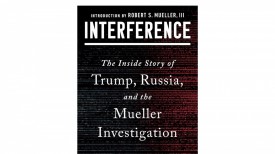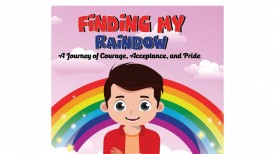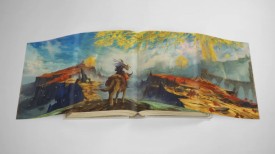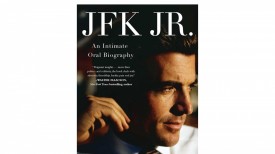'Life of Pi' Movie vs Novel: Reviews Say Film is 'Astounding,' 'Exquisite,' Ang Lee's 'Best Work,' Sneak Peak Clip [WATCH]
The story of a boy traveling with an untamed tiger out on the ocean has captured the hearts of the critics.
"Life of Pi," directed by Ang Lee, was released in theaters Nov. 21, just before Thanksgiving. It already received rave reviews for the adventure story. Most reviews talked about the difference in the novel and the film adaption.
The book, written by Yann Martel, is described:
The son of a zookeeper, Pi Patel has an encyclopedic knowledge of animal behavior and a fervent love of stories. When Pi is sixteen, his family emigrates from India to North America aboard a Japanese cargo ship, along with their zoo animals bound for new homes.
The ship sinks. Pi finds himself alone in a lifeboat, his only companions a hyena, an orangutan, a wounded zebra, and Richard Parker, a 450-pound Bengal tiger. Soon the tiger has dispatched all but Pi, whose fear, knowledge, and cunning allow him to coexist with Richard Parker for 227 days while lost at sea. When they finally reach the coast of Mexico, Richard Parker flees to the jungle, never to be seen again. The Japanese authorities who interrogate Pi refuse to believe his story and press him to tell them "the truth." After hours of coercion, Pi tells a second story, a story much less fantastical, much more conventional--but is it more true?
[WATCH SNEAK PEEK BELOW]
The film, starring Suraj Sharma, stuck closely the book but there were some differences.
Pi has a love interest in the book, played by Shravanthi Sainath, which was not in the book.
The Daily Beast touched on the differences in Pi's relationship with Richard Parker in the book vs the film.
"In the movie, Richard Parker is extremely aggressive and while Pi manages to survive with him for 227 days, he never manages to tame the tiger."
"The book, on the other hand, shows that Pi is very knowledgeable about animals from his time at his father's zoo. He is very cautious around Richard Parker, but he quickly asserts himself as the alpha male and marks his territory on the boat. Pi is also more deliberate in his training with Richard Parker and has him literally jumping through hoops by the end of the book," The Daily Beast pointed out.
The article also said that the book and film share the same ending but the tones are very different. In the novel, Pi seems annoyed with the two insurance men, and in the film, he is upset, especially when describing his mother's death.
Despite the differences in the movie and the novel, "Life of Pi" has gotten rave reviews, even for being in 3-D.
"Lee's exquisite adaptation of Yann Martel's 2001 best seller is a visual feast that leaves an indelible impression. Vibrantly rendered 3-D adds to the film's otherworldly quality." USA TODAY
"Sound is astounding, especially when you consider that the tiger is a digital creation. That puts enormous pressure on the actor who must react to a beast that isn't there. To play Pi, Lee chose the inexperienced Suraj Sharma, then 17, who returns the favor by giving a fine, fearless performance that consistently rings true." ROLLING STONE
"There is always a poetic aesthetic that Lee brings to his best work - the brutal martial arts ballet of "Crouching Tiger, Hidden Dragon" or the homophobic hatred against the backcountry grandeur of "Brokeback Mountain," which would win him an Oscar for directing in 2006. In "Life of Pi," certainly given its technological achievements, the filmmaker has raised the bar. Not since James Cameron's breathtaking blue "Avatar" in 2009 has 3-D had such impact." LOS ANGELES TIMES
See a sneak peek of "Life of Pi" below!
Are you going to watch this interesting adventure of a boy and a tiger? Sound off in the comment section.
© 2023 Books & Review All rights reserved.
Popular Now
1
Books to Read After 'Fourth Wing': Top Picks for Fantasy and Romantasy Fans

2
‘The Secret Public’ by Jon Savage Book Review: An Insightful Look Into the LGBTQ Influence

3
Stephanie Regalado's 'If They Only Knew' Column Is Now A Book, Unleashing 60 Anonymous True Stories to Empower Women

4
'No Wire Hangers' Scene That Almost Did Not Happen: New Book Reveals Faye Dunaway's Struggles

5
Rare First Edition of Aphra Behn's Novel 'Oroonoko' Discovered in Kent: A Historic Literary Find

Latest Stories
Book Reviews
‘The Secret Public’ by Jon Savage Book Review: An Insightful Look Into the LGBTQ Influence

Book News
Stephanie Regalado's 'If They Only Knew' Column Is Now A Book, Unleashing 60 Anonymous True Stories to Empower Women

Book News
'No Wire Hangers' Scene That Almost Did Not Happen: New Book Reveals Faye Dunaway's Struggles

Book Reviews
‘The Perfect Couple’ by Elin Hilderbrand Book Review: A Captivating Summer Mystery

Book News
New Book ‘The Franchise’ Reveals Penguins President Kyle Dubas’ ‘Biggest Mistake’ as Maple Leafs GM











